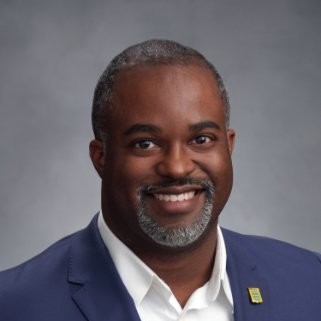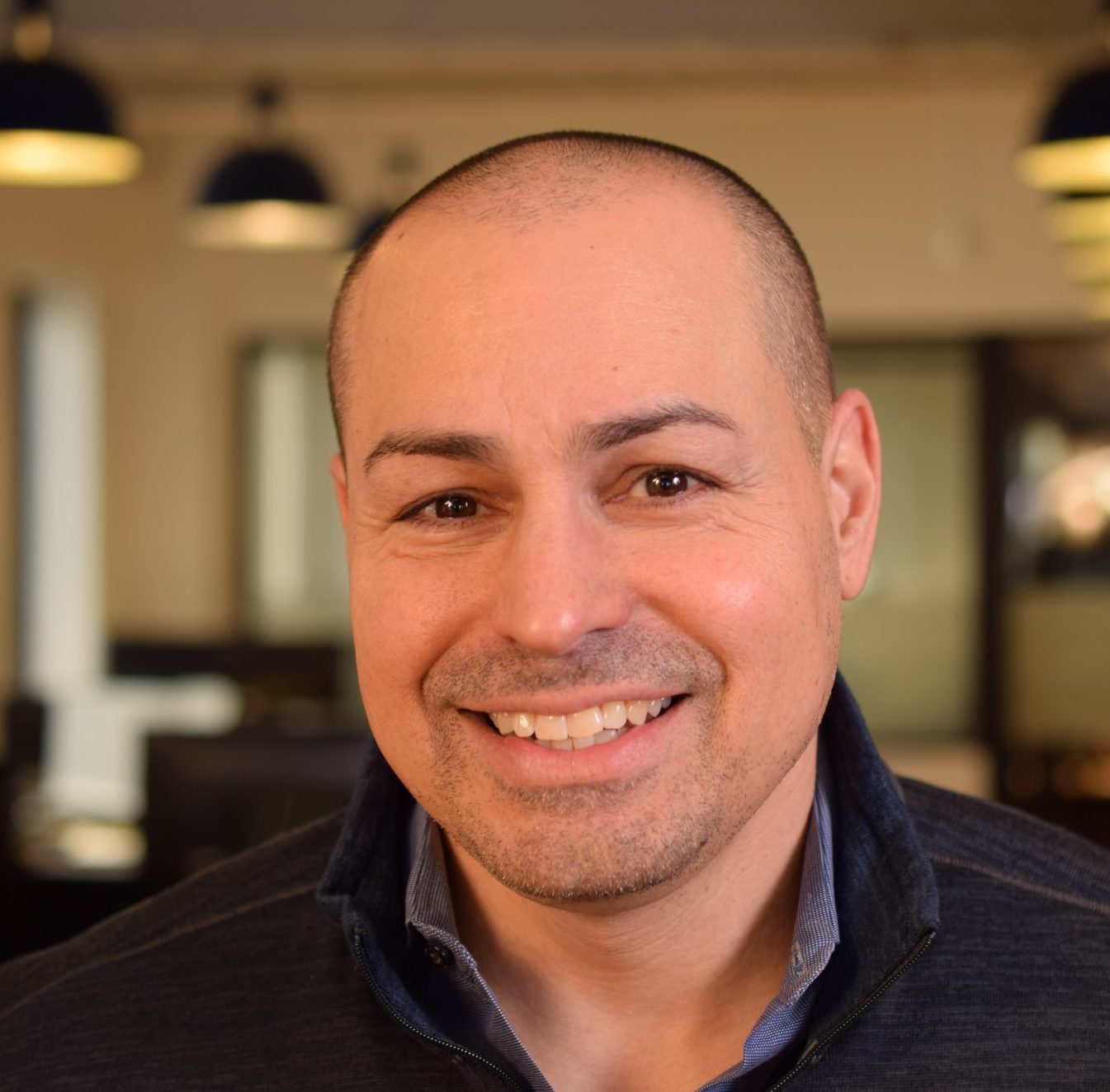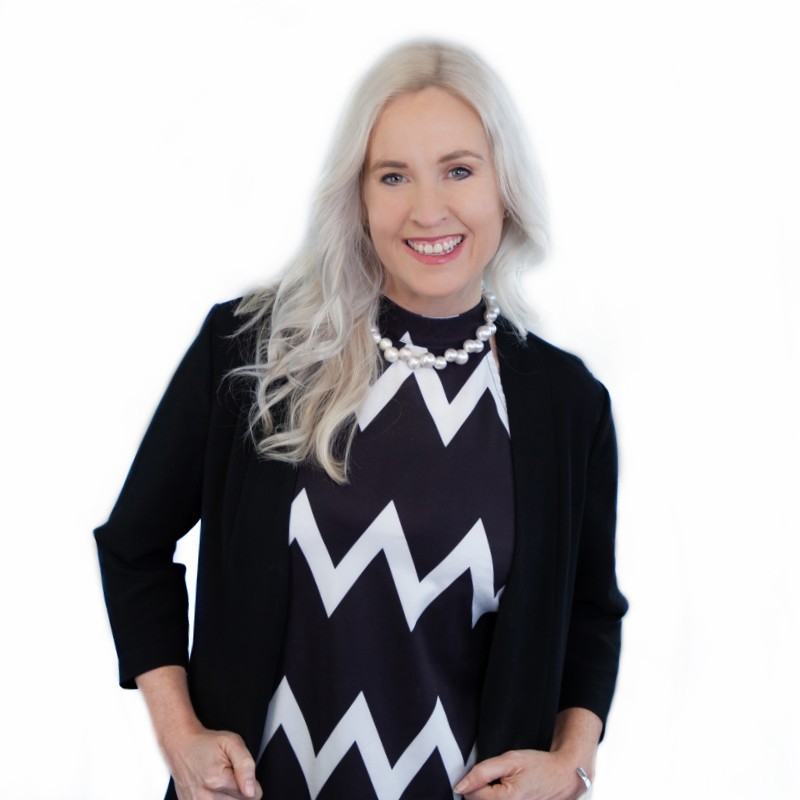What are we talking about?
Building the right team and not hiring people who are just like you.
Why is building the right team important for the digital workplace?
Getting your human team in place is important both for early-stage companies and enterprises. You want to surround yourself with people who complement your skills and who can help you see blind spots.
What did Ed Bailey teach us about X?
Avoiding lookalikes
“When leaders have limited information in hiring, they make decisions based on what they trust. So, they pick lookalikes.”
This is the trap that many business leaders fall into. They need to hire well, but without a lot of information about a candidate, they hire based on their gut, which often means getting people who look and act similarly to you. You may end up surrounding yourself with people you like, or people you are already comfortable around.
The three things a candidate needs to show are comfort, passion, and competence. The last is often the hardest to demonstrate. Ed says, “Hiring managers hire for chemistry and fire for competence.” The toughest part of the screening and hiring process is “Can this person do the job?”, yet that’s the reason they most likely will get fired.
When hiring, you need to put much more effort into making sure the candidate has the skills, abilities, and activities needed to succeed at this role. How can people prove they have that ability?
Don’t be the smartest person in the room
CEOs are often the 80th to 90th percentile in any given skill set. “Every person you hire should be better than you at something.” How can you value someone that you think you are better at than what you hired them to do?
You don’t get past 5 employees if you don’t solve the problem of hiring people who are better than you are.
The skillsets on your team need to be balanced because you will run up against a tough, unknown situation and you will need to rely on and trust other people.
What to do if you think you made a bad hire
If you think someone on your team is not a good fit, you have to treat it as a hypothesis. Is there clear verifiable evidence that this person is not meeting their goals? A lot of times it doesn’t show up in metrics, but in a broken relationship.
Here’s Ed’s quick relationship inventory:
- If I’m in a tough situation and this person pounds the table to share their perspective, am I willing to listen?
- If I see this person’s name pop up on my phone, do I have a positive or negative reaction to it?
Before you let someone go, make sure to have a plan to know who is going to take on their work. When replacing someone, have the others on the team try to absorb their work. The nature of your work may have changed a lot since you hired them.
More from Ed Bailey
Today, our guest is Ed Bailey. He’s the CEO at Polymath Performance and this episode is Work Minus Lookalikes. Hi, Ed. How are you doing today?
Doing great, Neil. How are you doing today?
Doing excellent. We’re here talking about lookalikes, trying to figure out what that means. First, I want you just to give yourself a little bit of introduction. Who are you? Where are you from? What can you tell us about yourself?
My name is Ed Bailey, originally from Chicago, Illinois. I’ve been living in the Bay Area for the past 15 years, have extensive experience doing executive coaching for small businesses, startups and larger companies in Silicon Valley. I think I was put on this earth to teach and to coach and to develop people. I love what I’m doing currently. I think in these important times, it really gives me an opportunity to help clients through really tough situations. And I find myself elevating my game during crisis management. I’m excited to share some tips really around hiring around lookalikes and the mistakes CEOs make a lot in both hiring and retaining employees.
So, we’ll put this in context. We’re on April of 2020 so everything’s surrounding the COVID-19 crisis that’s going on. We’re all in the middle of that, too. What’s your feeling from the business world? How are these CEOs of small and medium sized businesses handling this crisis?
By and large, I think everyone’s handling it really well. I think these are tough times. I think many small business CEOs were forced to make some really tough, uncomfortable decisions. I think what showed up are two things that I always think about. Number one is do you have the cash flow to plan for uncertainty. And number two is do you have the leadership skills to really identify in a crisis situation whose skill sets are most important to you and leverage those effectively to ride out the tide.
Let’s jump into that skill sets, leadership type of decisions that need to be made. That’s the core of our discussion here. Tell us what you mean by lookalikes. What are some of the traps that CEOs fall into when they’re doing those hiring, especially at the early days?
When I think about hiring, hiring and interviewing, it’s tough because you have to make a very important decision on very limited interaction and very limited information. I find that human beings in general and leaders specifically, when they have limited information, they go on their history, they go based on what they trust, and so they pick lookalikes. They pick lookalikes in terms of personality. They pick lookalikes in terms of skill set. They pick lookalikes in terms of background. They pick lookalikes in terms of topics they like to discuss afterwards.
What are the dangers that come about when people do hire the lookalikes? Obviously, when you’re in that position, you don’t think that person looks like you, you’re unconsciously selecting people that you get along with, that you have common interests with. Why is that so much easier to see maybe 5, 10 years down the road than it is when you’re in the middle of hiring?
I think ultimately, I have a saying that hiring managers hire for chemistry and fire for competence. Normally, when someone’s getting released, it’s because they aren’t getting the job done and they aren’t meeting the expectation of their manager. A lot of times, that missed expectation is really around can the person do the job. Frankly, that’s the toughest part of screening and figuring out the hiring process. It’s no surprise there that that is where a lot of mistakes are made. But at the same time, you mentioned the concept of unconscious bias. I think it’s really easy to naturally pick in important and uncomfortable and uncertain situations, someone you’re comfortable with. Really what I advise CEOs and owners to do in this situation is to really take a step back and really take the time to understand, number one, what are the skills, abilities and activities that are needed to be successful in the next role? And really make sure that in the interview process, you give candidates an opportunity to prove that they have that capability by having a structured exercise that at least simulates, if not, isn’t the actual exercise that they’re going to be expected to do on the job. I find a lot of interviews go into the “tell me about a time when” or “tell me about experience when” or “tell me about yourself” or “what are your weaknesses and what are your strengths.” And those are easy questions for most savvy people to be able to answer in a way that an interviewer will like, but it’s really hard to fake competence, particularly on an activity that’s designed well.
Can you give us an example of one you’ve done with a client of yours?
I was working with the youth basketball agency out near where I live. He had this classic problem over and over again. When we were talking about his business and what he needed, he said he needed an operations associate. I know that this CEO is someone who’s very detail oriented, very organized, and very structured. And everything that he does goes that way. When people don’t have that capability, they irk his nerves. It grates at him and grates at him. So, we had a conversation around what does an organized, well managed person look like? A lot of it comes back to how they organize their life and how they organize their schedule. I gave him two questions, one funny and one real life to answer. The first question is I asked the person to ask the candidate to describe their bedroom because OCD people have very neat and organized bedrooms with drawers and labels and buckets and containers for everything. And unorganized people, their bedroom is the last thing that they’re thinking about because they’re trying to rush out the house to do things that are more important. And the schedule question is really designed to consider that, we as humans, we all have 24 hours, we all have the exact same time scarcity. The people who get more done do that because they’re very organized and structured about how they think about all of their hours, where they’re allocated, and where they can say yes and where they can say no.
I want to come back to this word you use called comfort. When I’m thinking about starting a company, you want to surround yourself with people who you know you’re going to be working with these people a lot, especially in the early days, you’re going to get to know each other a lot. You want to like the person that you’re hiring for these things. So, tell us about that tension between where is comfort good because you feel, okay, I do have chemistry with this person. This is somebody I can work long hours with, I can go and do great things with this person, as opposed to just picking that person because they’re comfortable. What’s the difference between them?
I think that picking people based on comfort is important because, like you mentioned, if you’re going to be spending lots of hours with this person, you want to be able to build a relationship that’s authentic and positive because, when times get tough, you’re going to need to count on both that individual energy and that collective energy to buoy you forward. Comfort is absolutely something you should look for. It just shouldn’t be at the expense of competence. So, in other words, what I’m preaching and what I’m coaching is really just to make sure you give competence as much weight as you would give finding someone who’s passionate about the role and finding someone who you feel comfortable working with and who fits into your work culture. Really, what I’m ultimately asking for is giving the three equal weight because I do believe, ultimately, that they are equally weighted. I believe the challenge is that competence is hard. I just recommend taking a little bit more time to think about specific ways to measure competence instead of generic ways to measure competence.
Let’s talk about a specific situation that happens, I think, a lot in companies, especially as they’re starting up and scaling up. You get to the point where, as a CEO, you feel like and you might legitimately be the best marketer in the company, the best product owner in the company, the best salesperson in the company, the best customer service representative in the company. This is a problem when you’re the CEO and you feel like you’re the best person for everything. How do we get to that place? Obviously, we talked about that a little bit. But how do you get out of that place, I guess, is the biggest question.
You’ve hit the nail on the head I think. A lot of CEOs by construction, or by the way that they’ve lived their life and develop their skills, end up at least 80th to 85th percentile in a lot of different skill sets. If you were to build the entrepreneur from scratch, that’s what you would want. It’s natural for some that it would be difficult to find people who are above 80th or 85th percentile in a given skill set, but that’s why it’s super important in the interview process to double down on it. The recommendation that I give to all of my CEOs is every single person you hire should be better at you at something. It could be communication. It could be sales. It could be organizational skills. It could be they sleep different hours than you. But there has to be something that they are better at than you are else when it comes down to them having conversations with you, how are you going to respect their opinion? How are you going to respect their perspective? How are you going to go with their judgment and against your judgment in a tough situation where they may be closer to the action, closer to the answer? I have the saying that with people, trust comes first then expertise. But trust is normally built a little bit out of the perception of the person. How can you value a person who you think you’re better at at everything? That’s a very difficult road, and down the line, at least a very difficult conversations. I always talk about pain comes from disappointment. You’re setting yourself up for disappointment if you are absolutely better at every single activity than every single person at your company because then you can only count on yourself. There’s no way you can be fully utilized as a CEO. Here’s a fact. The CEO is normally the most expensive person at a company. They’re normally making the most per hour. It’s the most important that that hour of time is spent well and on the right activities. If in a tough situation, you think you’re better than everyone, you’re going to default to you taking on that activity versus someone else as normally not going to be the right decision for the topic.
That’s huge to think about that. At what stage of a company, how many employees do you feel like that these problems become a really big deal? I can see in a smaller company, you got 10 to 20 employees, maybe it doesn’t seem like such a big thing. Or maybe I’m wrong, so you can correct me. But at what point this is like you can’t grow any more beyond this.
I actually think it’s a problem at every stage in a company. I actually think you don’t get past five if you don’t solve this well. In other words, I’ve seen a lot of CEOs get stuck with teams of three or four or five that were revolving doors because they never could get the right people in seats locked in to be able to grow to 10 or 15 or 20. Then I’ve seen CEOs get stuck between 5 and 20 because they hired the top people right, but they didn’t hire the supporting cast in a way that sets up the company to grow and be successful, because then he trusts the five, but he doesn’t trust the other 10 to 15. So, the five take on too much work and they burn out. I think actually at each stage of growth, growing to 5, growing to 20, growing to 50, growing to 100, when you don’t make sure you have balanced teams that are both comfortable to work with, passionate about what they’re doing, and competent at it, you’re going to be exposed the instant you run against a business challenge that’s new and that doesn’t have a solution. Because when something’s new and it doesn’t have a formula, that’s when it’s most important for everyone to work together and for the skill sets to be balanced. I liken it to the TV game show “Survivor”. If you don’t have or build out the outdoor skills necessary to survive, and if you don’t have something to add to the tribe, you get sent home. A lot of times getting sent home for a CEO means lots of wasted investment, capital, debt, and potentially bankruptcy. No one gets into this process to have those things happen to them. It’s not fun to go through. It’s not something you want to go through.
Let’s talk to somebody who’s listening in. They’re resonating with a lot of what you’re saying. But their problem is that they’re maybe too far into it. They’ve made the mistakes you’ve talked about. What do you recommend to people who are in that situation that are leading these companies and they know there’s one or two people on their team, on their leadership team, that just is not the right fit? They don’t trust them, or they don’t feel like they have competence up to a certain level. What’s the right way to go about that?
I am a firm believer that when you come up with ideas or statements like that, they have to start as hypotheses. With a hypothesis, you have to test fairly, whether you’re right or not before making the move. The first thing I would do if I suspected I was working with someone closely and they weren’t competent, is I would take a step back and think about what’s my company’s mission? What are my goals? What are the metrics or measurements behind those goals? And is there clear verifiable evidence that this person is not meeting those goals? That’s how I would evaluate the competency side of it. But a lot of times, the lack of competency doesn’t show up in missing metrics. It shows up in a broken relationship. So, then I would also do a relationship inventory and I would ask myself the following questions. Number one, if I’m in a tough situation, and this person pounds the table hard and shares their perspective, am I willing to listen? Number two, if I see this person pop up on my cell phone, on my computer with an instant message, do I have a positive or a negative reaction to it? And through those two questions, and through the competency question, you can figure out pretty quickly, is this something that can be fixed or is it something that can’t be fixed?
I find that a lot of CEOs want to, at this point, take the next step and put someone on a performance improvement plan or something of the like. What I found at that step is, if the plan isn’t set up really, really well. They’re going to fail that for the same reasons that they’re failing at the current job. Once you’ve recognized that you’re beyond the point of repair, either from a competency or from a relationship perspective, it’s best to just have the conversation and tell them. But before you do that, you have to have a plan for who’s going to take on that person’s work because that’s going to give you the comfort and the ease to make the right decision versus the decision forced by scarcity. In other words, if you’re uncomfortable with this person, but you also feel like this person can’t be replaced in terms of the work they’re doing, it’s really hard for both to be exactly true at the same time. You have to figure out which side of it you’re on. Ultimately, you do that by really breaking down what’s the most important work that has to be done for my organization, and is there someone else who can do pieces and parts of it, because normally you aren’t going to replace a 40-hour worker at first with another 40-hour worker. And that’s another lookalike syndrome that we should absolutely talk about. You’re normally going to replace them at first with 5 hours from one person, 5 hours from a second person, 20 hours from a third person, 5 hours from a fourth person. I would really encourage CEOs to go through that process for themselves before having a conversation, because it will give them more confidence in that conversation. They won’t be swayed by the negativity of what if I miss out on a great opportunity because I’m making a transition for someone who’s not affected for me in the first place.
Let’s talk about that. When you’re replacing somebody, let’s say that somebody leaves your team for the best of reasons, they have a different opportunity, they have to move for some reason. A lot of times, I feel like a leader is going to want to say, all right, I just want to find a lookalike for that person, like someone who’s exactly like that. How does that work out? Is that always possible to do? Should CEOs just forget that person and try to go back to the basic concepts and competencies or what should they do?
I find the situation happens a lot. I think you’re right, the first instinct is to put out the same exact role that that person had, and try to find as close of a facsimile or a better 2.0 version of the person who left. I think sometimes they can be found. But there’s always a question that I asked my CEOs first. The question I always ask is, was that person operating at 100%? In other words, if the person was an all-star, and they were doing the role correctly, and it was optimized, and it actually took 40 hours a week, then yes, you should try to replace them like for like, but it’s very rare that all of those criteria are met at the same time. Because of that and because you can’t assume that everyone who left the role had done it well, what I always encourage business owners to do before putting a requisition out, is have the team try to absorb the work. In that, you’re going to discover three things. One, you give skillsets that other people have on the team the opportunity to rise, and it may be possible that other members of your team weren’t being used efficiently either and that big parts of the workload could be absorbed by your current organization, no problem. Then there’s a cost savings there and there’s a development opportunity there. The second thing you’re going to find out is that the nature of the work, or the nature of the importance of the work to your business, has changed since you made that hire or since you made other additions to the team. Once you go through that process, what I find is that the job description for the person you need to hire is very different in at least two or three critical errors than the job description that that person left. In this, we talked about earlier the danger of hiring someone for 10 hours of work into a full-time role. They just use the other 30 hours and they add in things that aren’t important. This is an important check, I think, for CEOs to have to make sure that when they’re bringing in someone new, that there’s actually 40 hours of legitimate work that helps the business and you can’t make that statement without testing that assumption.
Ed, what do you feel like what’s your relationship with the tools that are out there to evaluate personalities and their proclivity to work well together, those types of things, how much weight do you put on those types of tools to really figure out, is this person exactly like me? Or do I need to run a diagnostic to figure out what ways we’re different? What’s your opinion on that?
I think the personality tools and the diagnostics out there can be super helpful. But I think there is a basic way to start to get at that information, even without using personality tests and diagnostics. I have the hypothesis that most people are driven by self interest at the end of the day, their decisions, their choices, whether consciously or unconsciously, are going to be based on what they care about. Before you describe what the job is and what the opportunity is and things like that, if you simply ask a person what they care about, what matters most to them, they have no incentive to lie because they don’t really know what it is that you want and that you’re looking for. If you can get that honest feedback, and more importantly, you give that honest perspective on what your actual self interests are, you can make the conversation less about perceived commonalities and more about actual common ground that you can build an alliance around.
Walk me through that a little bit more. If I’m trying to evaluate somebody for a key role in my position, what are some of those first questions? Or how do I start that ball rolling?
One question I like to use just to get to know a person is, what do you do between 7pm and 11pm at night and on weekends, because for most people, that’s not work. For most people, that’s recovery from work. You’re likely to do things that feed you, that feeds your gas tank, that aren’t encumbered by other people’s decision making models. I find that if I start the conversation that way, people open up, they smile, they start laughing, they start telling interesting and funny stories, and I learn things about them that I would never learn otherwise. Those things can start to hint at what their personality is like, what drives them to be successful, and then you can ask more discovery oriented questions that can be around the culture, or that can be around the company, or the context of the team vibe, to really start to drill down on what really matters to this person and does that align with what really matters to you and what really matters to your company. Again, it’s about trying to design questions where people have no incentive to lie. Why would you lie about what you do at night unless you’re super embarrassed about it? In that case, you’re going to tend to give a generic answer. And then as a manager, that’s a red flag of, that was unusually generic. What are they hiding? And that instinct is normally right. When someone’s generic and dispassionate, normally, they’re trying not to say something.
Are there any concerns you should use as you’re asking those more personal questions? Maybe if somebody does have a legitimate thing they’re not sure how you’re going to respond, they have a part of their personality that they’re covering or they’re trying to hide for? Is there a way that we should be aware that?
I think it’s super important, particularly today, but I think always that we want to build inclusive environments. We want to make sure we don’t ask questions that put people in really tough and awkward positions purposefully. Normally before I asked that question, that’s why building rapport at the beginning of the interview is really important. Normally, before I ask something like that, I normally as a manager actually share what I spend my time doing in those moments. I also share something vulnerable and interesting, and something that I might not be super comfortable being worldwide public, but in front of my employees, one of the things I’m trying to do is demonstrate trust and credibility. Sometimes you have to role model the behavior and the expectation you have for others. And if you role model authenticity, and vulnerability, and being open about something that’s risky, other people will follow suit.
Ed, I like you, man. You’re a smart guy. You’ve got a lot of experience here. Obviously, it’s not your first time talking about this. You’ve got a lot of things behind you and stories to share for this. I really appreciate you coming on and sharing your thoughts about this. Where can you go if we want to learn more about you and the other stuff you write about?
I have a website. It’s www.polymathperformance.org. A polymath, for those who are curious, is someone who has a lot of knowledge in a lot of different ways. And don’t let the math scare you. The math is actually from the Greek word mathema, meaning to learn. That’s my website but you can catch me on LinkedIn. Just look up Ed Bailey in Google and you’ll find my profile quickly. And you’ll find the articles that I share and the interest that I have in. I’m always one LinkedIn message away.
Was there a moment in your life and that word, polymath, you were like, wow, that fits me. I think I get that.
I learned that word probably my sophomore year in college, and it really stuck. Actually, speaking of personality assessments, I actually found a new word that also stuck. There’s this word called philomath, which is someone who loves learning. And I found that I’m both someone who really, really loves learning, and that’s a distinctive quality. But I’ve also learned about a lot of different things. And so, the combination makes it really fun to progress and journey through life.
Awesome. If we were having a trivia night, I want to make sure you’re on my team. I feel like you’d be an asset for that.
Yeah, I hope so.
Good. All right. Well, thanks so much for being on the show, Ed. And we look forward to talking with you again soon.
Absolutely. I appreciate the time, Neil. And if you ever need me to come back and talk about other things, I’m down for it.
A Chicago native, my parents instilled a strong desire in me to learn, critically think, and share my knowledge. As I have progressed on my life’s journey, my mission has become clear: to understand, predict, and enhance performance through teaching, analytics, management, and leadership. In creating Polymath Performance, I strive to share what I have learned with others in structured ways that are easy to access and absorb. I am excited to about the potential to work with students of all ages and share my love and experience in mathematics, career counseling, and preparation for college or graduate school.
I received a Masters in Business Administration (MBA) and a Master of Arts in Education from Stanford University and a Bachelor of Science degree with a dual concentration in Mathematics and Finance from Michigan State University. I have always had 99th percentile test scores and have achieved great success in the classroom and in the business world in my roles at McKinsey & Company, Google, LinkedIn, and Cisco. In addition, I have taught math at the collegiate level and have tutored students throughout my life. I am looking to share what I have learned with the next generation of talent in hopes of helping them to achieve their dreams as others have helped me to achieve mine.
I am also passionate about contributing to the world around me. I am member of the Alumni Board of Trustees for the College of Natural Science at Michigan State university and was a trustee of the school board for the Mountain View-Whisman School District, a K-8 school district in Northern California from 2008-2012. I also started the XOXO Foundation in 2014 to focus on eradicating the stigmas around mental illness and I partner with the American Foundation for Suicide Prevention to drive awareness and solutions.












